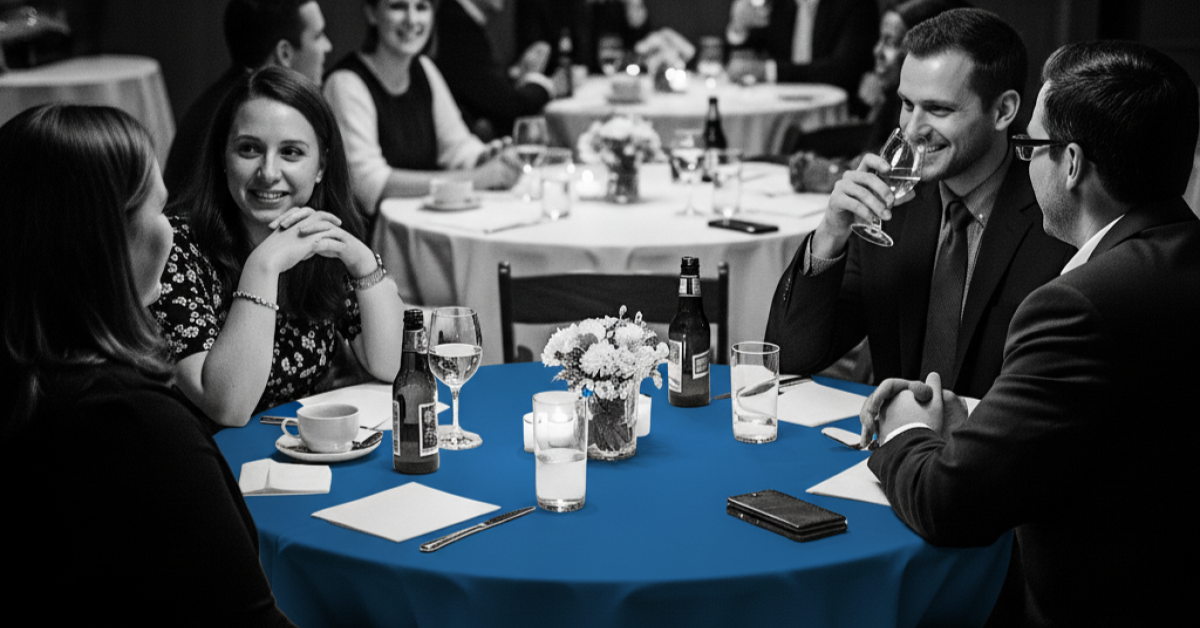Micro Event, Macro Impact: How a Dinner Drove Real Conversation, Strategic Value, and Executive Connections

Designing a micro event that *feels* effortless is anything but.
Anyone who has run a dinner, roundtable, or leadership retreat knows this: the more seamless the experience, the more planning, structure, and intent it requires behind the scenes. And yet, when executed correctly, these smaller-scale events can have a far greater impact than large-scale productions.
Our recent CEO Roundtable Dinner was a case in point. What looked and felt like a relaxed, insightful evening was the result of tight curation, clear purpose, and strategic execution. It was more than a lovely night out; it was a working model for how smart B2B can be personal, precise, and built for connection.
Why We Bet on Micro-Events
The markets in which most B2B companies compete are noisy and crowded, making many marketing efforts go overlooked. Content is abundant, but time isn’t.
Micro events work because they cut through that noise. When done well, they:
- Drive depth, not just reach
- Surface insight, not just impressions
- Spark authentic dialogue, not pitch decks
- Create human connections
But this only works if the experience is purposeful.
The Build: Strategy Behind the Dinner
We weren’t just looking to fill seats; we were curating a conversation.
Who was in the room:
15 B2B CEOs and senior execs from SaaS, cybersecurity, professional services, and consulting firms. Each guest was actively navigating change at their company and was willing to share their approach.
Why we brought them together:
To explore the themes we’re hearing across clients, prospects, and partners, including:
- How AI is reshaping business models and leadership priorities
- Where GTM strategy is breaking and evolving
- How CEOs are adapting to lead in accelerated timelines, with less certainty
Our team handled everything:
- Guest list strategy and outreach
- Content structure and facilitation
- Experience design (including materials, flow, and seating logic)
- Post-event networking facilitation
What Happened in the Room
Structured but not scripted, the conversation centered around three significant areas:
- AI across the business
This wasn’t a “tools” conversation. It brought up real concerns:
-
- How do we lead AI adoption internally without losing trust?
- How do we differentiate when everyone’s claiming “AI-powered”?
- How do we look at the ROI of AI?
From a guest: “Terrific conversation. Responsible use, AI strategy, and even the buyer persona’s growing AI fatigue.”
- Strategic growth and business model shifts
Leaders shared how they’re adapting in real time: some are navigating acquisitions, while others are changing service delivery models or doubling down on partner ecosystems. Everyone’s recalibrating.
From a guest: “AI is transforming how we work and our models. We’re shifting toward an outcome economy.”
- Leadership in uncertain cycles
We closed with a round-the-room reflection on “What’s shifting in how we lead?” Every single person spoke. And stayed late.
From a guest: “We’re building the plane while flying it—and the airspace keeps changing.”
Why It Worked
This dinner wasn’t about checking a box. It was a live demonstration of how we think and operate.
Here’s what made it effective:
- A highly targeted, curated guest list
- A clearly defined but flexible conversation structure
- Experienced facilitation (not over-orchestrated)
- Follow-up strategy built in from the start
We walked away with:
- New prospect conversations in progress
- Several future podcast guests
- Themes that will directly inform new content and campaigns
- Peer-level connections that are still unfolding
More importantly, Magnetude showed—not told—what human-centered B2B marketing looks like.
What We Tell Clients (and Live Ourselves)
If you’re trying to build relationships at the executive level, compete in a noisy space, or turn conversation into pipeline, micro-events should be on your roadmap.
They don’t replace lead gen. They strengthen it.
They don’t replace content. They shape it.
They don’t replace strategy. They are strategy.
And if you’re going to do it, do it right. Let’s talk about your micro-event strategy.